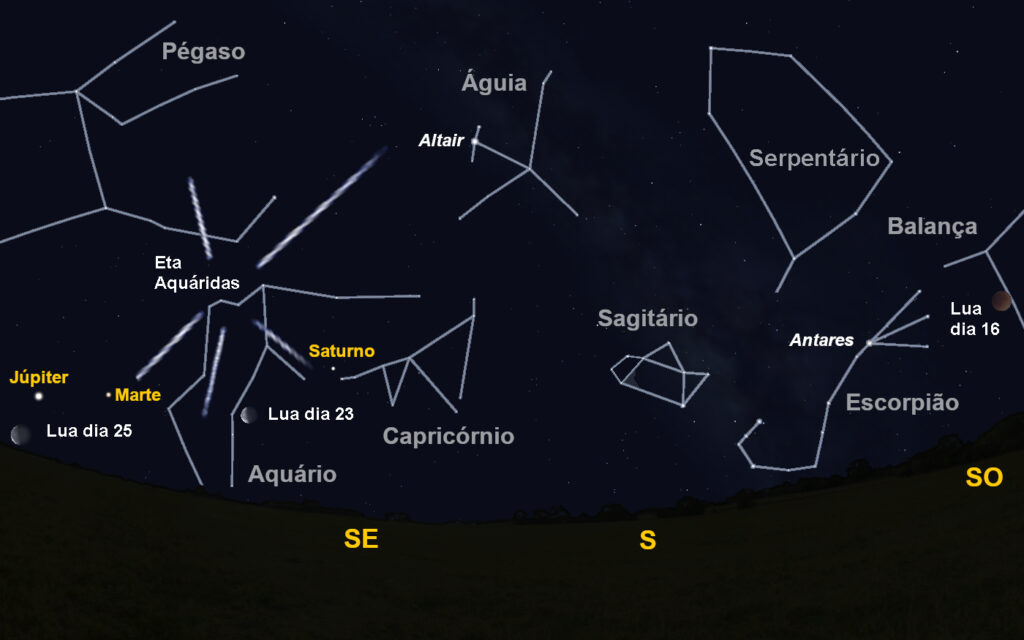At this time of year, we come across the small rocks and dust lost by Comet Haley, which seem to arise from a part of the sky (the radiant) very close to the star Eta in the constellation Aquarius. The peak of the Eta Aquárids star shower will occur at dawn on the 5th, with up to three dozen meteors per hour being counted, under ideal observation conditions.
The first quarter will take place at dawn on the 9th, while the full moon will take place at 5:15 am on the 16th.
As this last ephemeris will take place in the earth's umbra zone (a region where the sunlight is completely blocked by our planet), there will be a total lunar eclipse.
However, as this ephemeris will start at 2:30 am (continental time) it will only be fully observable on the islands of Corvo and Flores.
In mainland Portugal, this eclipse will only be seen until the end of the total phase (phase in which the moon has a reddish color, due to the light scattered by the Earth's atmosphere), when it will set.
Between the dawn of the 16th and 17th, we will notice how the Moon passes from the Libra constellation to Antares, the heart of the Scorpio constellation.
At dawn on the 22nd, the Moon will be seen next to the planet Saturn. On the same day, the waning quarter will take place.
At dawn on the 25th, we will watch the moon rise with the planets Mars and Jupiter. Note that the closest approach between these two stars will occur on the 29th.
Two mornings later, the Moon will pass in a direction so close to the planet Venus that anyone who is in Indonesia or the Philippines will even witness the occultation of this planet by the Moon.
At the end of the month, we will have the New Moon at midday on the 30th. This will be the best time to observe celestial objects that require dark skies, such as galaxies, nebulae or star clusters.
Good remarks!
Author Fernando JG Pinheiro (CITEUC and FCTUC)





















Comments